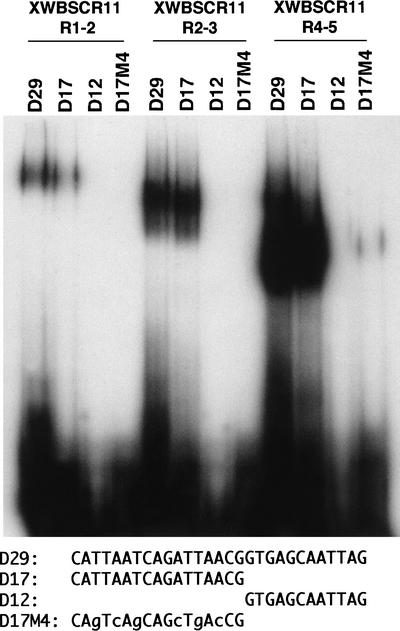Figure 3.
Formation of a complex between bacterially expressed XWBSCR11 protein and the gsc DE (activin response element) revealed by EMSA. Truncated GST-XWBSCR11 fusion proteins containing repeats 1 and 2 (GST-XWBSCR11 R1–2), repeats 2 and 3 (GST-XWBSCR11 R2–3), or repeats 4 and 5 (GST-XWBSCR11 R4–5) were generated and used for EMSA with the full-length, 29-bp gsc DE (D29), as well as a 17-bp 5′ version (D17), a 12-bp 3′ version (D12), and a mutant form of D17 (M4). In the case of all three GST-XWBSCR11 fusion proteins, mobility retardation of the DNA probe was observed only with the D29 (DE) and D17 oligonucleotides and not with the D12 and M4 mutant forms, demonstrating the specificity of XWBSCR11 for the DE and suggesting further that the binding of XWBSCR11 to the DE occurs in the 17-bp region. (Bottom) Sequences of the gsc DE oligonucleotides used in this study. Mutations in the 17-bp portion of the DE used to generate the M4 oligonucleotide, which abolished activin responsiveness in reporter assays, are represented as lower case characters. M4 mutant oligos compete poorly for XWBSCR11 fusion protein binding to the DE (data not shown).

